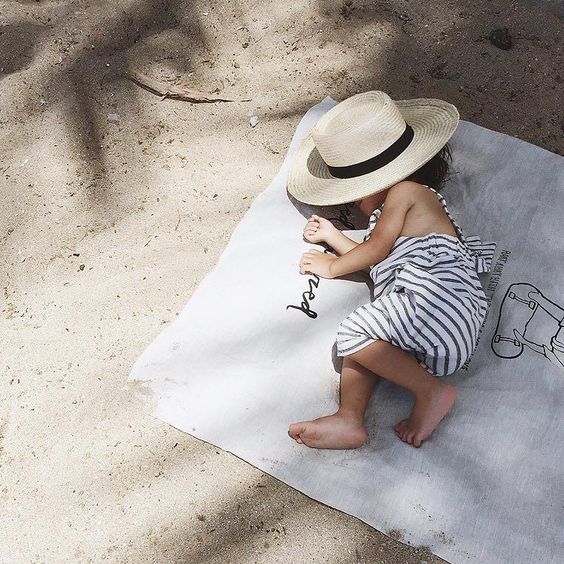With the first rays of sun comes the question of how to protect the skin of our children, and in particular, the very little ones. Which sunscreen to choose for them and for the whole family? Which SPF and how often should you apply it? How do you identify healthy and safe products? Must you choose between security and sensorality?
Which SPF level should you choose to protect the skin of a baby?
Whether they are blonde with a light complexion or brown with matte skin, the very little ones have thin and fragile skin that requires a very high protection cream (SPF 50 * or SPF 50+). This index, if it is indeed adhered to by the manufacturers (which is not always the case, according to tests made by the UFC-Que Choisir*), means that only 2% of UV will penetrate the filter (versus 3.33% for “high protection” creams indicating an SPF of 30 and 4% for medium protection creams indicating an SPF of 25).
How much and how often should you apply the sunscreen?
The information is easy and essential to remember: to stay protected, it is necessary to apply sunscreen every two hours, and again after swimming or after perspiring. The “generous layer” instruction typically written on the packaging means that it is necessary to measure, for a medium-sized adult, 6 teaspoons (about 36 ml) of cream to protect the whole body. For a toddler, measure about 15 ml.
To note: a sunscreen containing chemical UV filters, composed of organic molecules, should be applied 20 to 30 minutes before exposure. This is the amount of time needed for the filters to begin absorbing UV rays and convert them into heat.
Creams (mostly organic) that use mineral filters (usually zinc or titanium oxides) are effective as soon as they are applied: via microparticle assembly, these filters diffract light and reflect UV, acting as a barrier.
Good to know: certain solar products combine two types of filters and thus cover the entire solar spectrum.
The brands you can choose with your eyes closed
With this essential information used in combination, you can make the right choice among the plethora of solar products options. Should we choose a sunscreen marketed specifically for babies or children? Not necessarily. Since a good solar product is sufficiently protective and free of ingredients considered undesirable, it will be suitable for all members of the family. Among the good old classics that do not disappoint by their ingredients or their effectiveness: the solar water products Thermale from Avene and Anthelios from La Roche-Posay.
For organic sunscreens, we particularly like the cremes from Laboratoire Biarritz and the solar range of Biosolis. In a cream or in a milk forms, they are as effective as they are pleasant to apply and, to avoid spoiling, are devoid of harmful substances for health and for the environment.
Ingredients to avoid in sunscreens
To find a sunscreen that your whole family can safely use, you should know by heart the list of ingredients to completely avoid: Ethylhexyl methoxycinnamate, Cyclopentasiloxane, Oxybenzone, Octyl methoxycinnamate (OMC) and 4-methylbenzylidene camphor (4-MBC) … So many sunscreens suspected to be endocrine disruptors.
To do your cosmetic shopping with confidence, you can also refer to the QuelCosmetic app. Recently launched by the UFC Que Choisir, it allows you to know, in the blink of an eye, whether the composition of a sunscreen product is clean or not. Available for free on iOS and Android.
*survey conducted in the spring of 2017 by the UFC-Que Choisir consumer association
Translation: Ashley Griffin
Read more on Les Louves
New organic beauty routines to adopt
Your pregnancy: tips and a to-do list, month by month
Five activities to help kids discover nature in the city
Baby’s first outings: how to introduce your child to the world around him

